"The lines are so thin (between a good and great season), so I’m trying to find any edge I can get, Mark’s done a great job for me of understanding who I am as a golfer.  Mark Horton is Brandt Snedeker’s numbers guy on the PGA Tour who trawl’s through and analyses Snedeker’s ShotLink data to determine the areas of his game he should work on to improve his performances on the golf course. This information is then built into a strategy of how he will play a particular golf tournament from the point of view of managing shot selection and strategy, through to specific performance objectives like a tournament score goal that he will aim to achieve. Since Snedeker began working with Mark Horton in 2010 he has greatly improved his performances on the golf course. Read this Golf Digest article: http://www.golfdigest.com/golf-tours-news/2013-09/gwar-golf-stats-rosaforte-report-0930 High level golf performers like Brandt Snedeker and other PGA and LPGA tour professionals use golf performance metrics today more than ever to help them understand what they need to do to become more successful on the golf course. Since there is nothing you can do about the way another golfer is playing, all you can really do is concentrate on your goals for an event and have an effective and well thought out strategy in place to maximize your performance. Performance goals are the short-term goals that help you to do this. What are Performance Goals? Performance goals are the next step in the goal building process where you now identify specific performance objectives in the short-term like shot type goals such as learning how to hit a punch shot, or possibly golf stroke type goals like learning an advanced bunker shot technique, or even golf score goals like achieving a certain score average. So let’s have a quick look at what your goals look like so far. You should now have your career goals and relatively long-term goals written in your goal notebook, and now we’re going to add the shorter term performance goals that help you link the whole process together. When you think about goals, Earl Nightingale was right when he said that goals are “the progressive realization of a worthy goal or ideal.” Goals, whether they are short-term goals like performance goals, or far away goals like career goals, really are all about being able to see your ideal future, and have a big enough reason to pursue them. Golf is a numbers game, let’s not forget that, and your performance goals drive the process that leads to the achievement of worthwhile outcomes like a low scoring average for the season, or possibly a golf stroke goal like improving your putting average from 6 feet (2 metres), or even goals like improving your proximity to the hole from bunkers. Your performance goals are chosen by you, however you will find it extremely helpful to involve your golf instructor/coach in this process to help you to decide which performance goals are the right ones for helping you to make progress with your game. And that’s the name of the game after all, isn't it? The criteria for selecting your performance goals will be based on the model we presented to you earlier, and in this case you will be using four of the goal selection criteria to help you to select your most appropriate goals. So to help you to understand how this works, let’s use the example of winning the under 18 state golf championship to show how to identify your performance goals. If you wanted to win the under 18 state golf championship (insert whatever your most important year one goal is) what would your playing standard need to be to give you the best opportunity to achieve this goal? Here are some helpful questions that will aid you in getting some clarity around achieving this goal. 1. What would your score average need to be? How else could you define your playing standard? 2. What specific golf techniques would you need to improve? 3. Are there any particular golf shots that you will need to be develop with your golf instructor to play the golf course in such a way that you would improve your opportunity of winning - or at the very least contending in the tournament? These questions will help you to get started. Notice that in order to give yourself the best opportunity to win this event you need to get your score average or playing standard to a range that would improve your odds? That's logical enough isn't it? As I’ve mentioned previously, if you don’t establish a score standard, how can you achieve any of your goals in the short term or the long term? 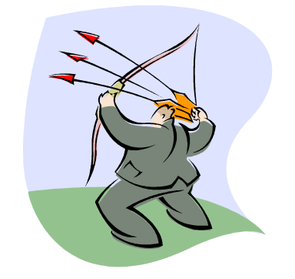 Now we need to identify the most important performance goals that will help to make progress towards your relatively long-term goals. Remember the sequence as you go through this exercise. What would come first? For example if your goal was to win the under 18 state golf championship what would be the first thing you would have to do? What’s would be the next step and so on? Here’s an example (below) of how to write your performance goals down in your goals notebook. And remember to make sure that as you write these goals, you write them positively. Take your time thinking carefully about your performance goals, and it wouldn’t be a bad idea to ask your golf instructor to assist you with this exercise. Now it’s your turn, write down ten or more performance goals and keep in mind as you write that these performance goals can be very short term performance goals (weeks) through to longer term performance goals (months).  Narrowing Your Focus Next, I want you to go back through your list of performance goals and choose the five most important performance goals out of your list and rank each of them from most important to least important and then put a circle around them or highlight the category to the right of your goal that represents the type of performance goal it is.
Remember to maintain balance in setting your performance goals. How does your shot-making or stroke-making influence your score-making? If you wanted to achieve a score average of 75.0 what skills/shots directly influence you achieving this performance goal? Will you need to improve existing golf techniques or your shot-making to achieve these? Your ranking is going to be based on the order of relevance and their influence on achieving your most important performance goal. Here's an example of a re-rank for the five most relevant goals that will give you an idea of how its done. The 5W-1H Strategy Once you have written out your five re-ranked performance goals (as I've done in the example above) now you need to add your reason or justification for achieving each of them. You will find it helpful to use the 5W - 1H Strategy for writing out each performance goal you've chosen as this strategy will help you to justify your reasoning for choosing each of your performance goals. Once you have written (in pencil) your performance goals, go over them carefully and make sure that you are happy with your selection. 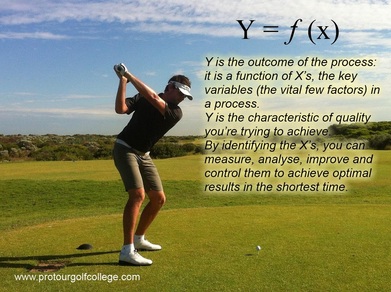 Find the X's in Your Game The best golfers in the world are now getting help from experts in fields other than from golf instructors and sports psychologists to help them achieve their goals in tournaments. You need to be able to break down your performances carefully to identify the skills and strategies and numbers to help you make progress with this challenging game. The formula Y = f (x) in the image left comes from Six Sigma which is a business management strategy originally developed by Motorola, USA in 1981. This formula perfectly describes the inputs, outputs, and the variables that influence your golf performance outcomes. -------------------------------------------------------------------------------------------------------------------- Here are the links to three comprehensive golf statistics programs that we highly recommend. (We don't receive any compensation for recommending these golf statistics programs, we just think that they are great programs for serious amateur and professional golfers and worth a look.) http://shotstohole.com/ http://www.shotbyshot.com/ http://www.golfdatalab.com/ -------------------------------------------------------------------------------------------------------------------- Goal setting is all about getting the process right at the input side so that the outcomes are consistent with your expectations. Your job is to continue to identify and improve the 'X's in your game so you can make steady and continuous progress. “Whether he helps or not, I think he does and I believe he does, so that’s all that really matters, I've got confidence in what he tells me. He’s turned into my mental guru, I guess. He gives me peace of mind in what I’m doing.” - Brandt Snedeker talking about Mark Horton In the last part of our goal building process I will show you how to use Performance Progress Goals to really narrow down your goal process to the actual practice processes that will help you to achieve your performance goals.
If you are thinking that goal building is quite an involved exercise, you would be right. But remember this;
Yes they worked hard, but they also knew exactly what they wanted. Goals take the question mark out of your future in golf (or anything else) and replaces the question mark with the specific steps to a better and more successful life. Lawrie Montague and David Milne - Pro Tour Golf College Your Success On Tour is Our Business Comments are closed.
|
Archives
June 2019
|
Proudly Supported By
Copyright © 2011 - 2018 Pro Tour Golf College
Website Managed By Golf Performance Media
All Rights Reserved
Website Managed By Golf Performance Media
All Rights Reserved



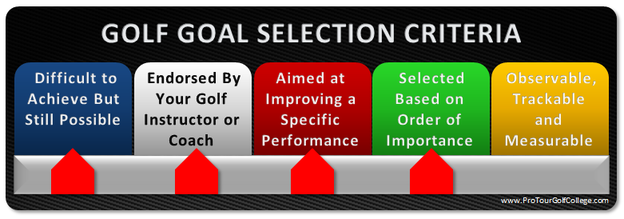
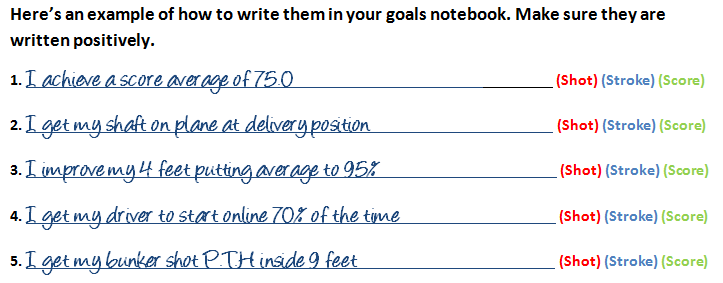
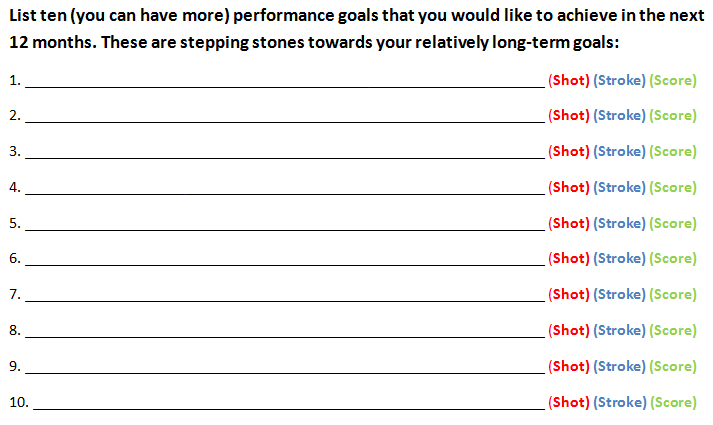

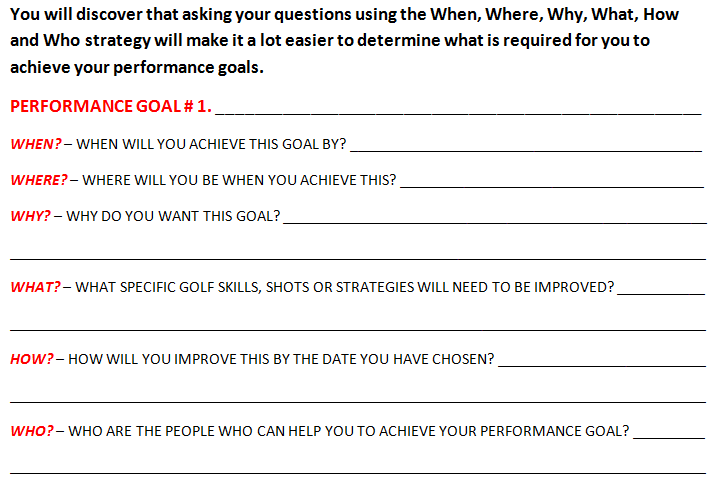

 RSS Feed
RSS Feed



